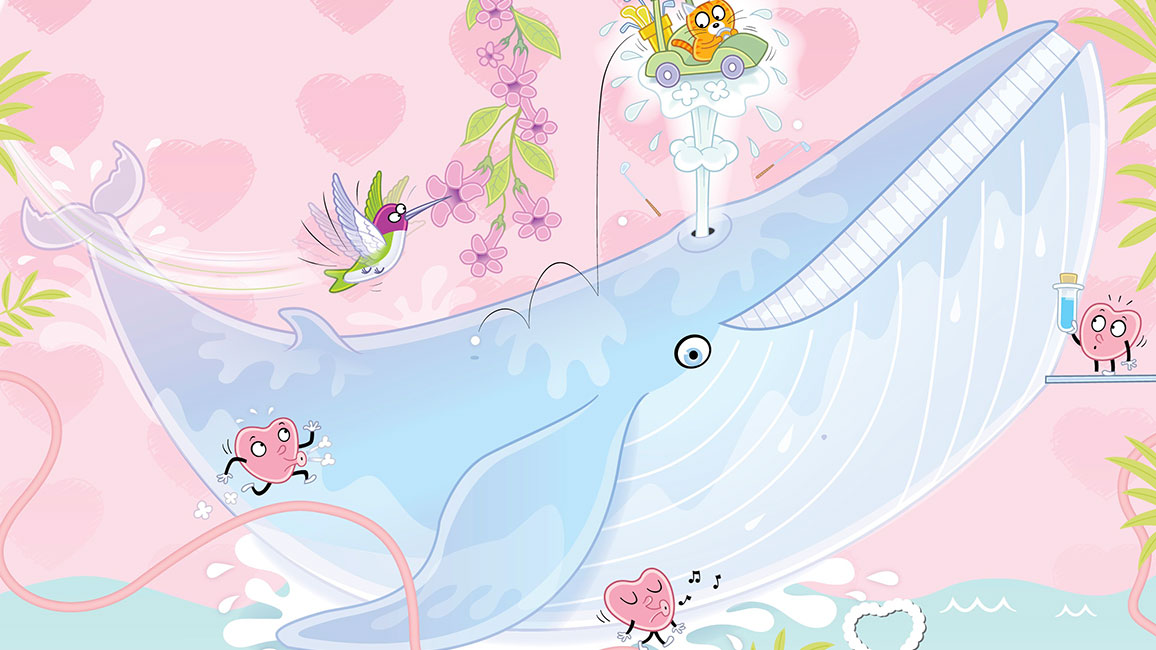
Animal Hearts
By Gerry Bishop; art by Jack DesrocherThese facts will get you pumped up about animal hearts!

Valentine’s Day is on its way, and everyone is starting to think about love, friendship, and hearts! Why hearts? Because people used to think that our hearts were where feelings came from. Now we know that they come from our brains, but that doesn’t make our hearts any less important. These beating balls of muscle pump blood to all parts of our body, carrying the energy and oxygen we need to stay alive.
Our hearts, and the hearts of all other animals, have the same big job to do. But they also have some surprising differences!
The hearts of small animals usually beat faster than those of large animals. For instance, when a hummingbird is flying, its heart beats 1,200 times a minute! But the heart of a blue whale—the largest animal on Earth—usually thumps along at only 6 to 10 beats per minute.
The heart of a cat is about as big as a peach pit. Your heart is about the size of your fist. And the heart of that huge blue whale? It can be as large as a golf cart!
An octopus has a heart on each side of its body and one more in the middle! (Another strange thing about octopuses: Their blood is blue, not red.)

When a seal dives deep into the ocean for food, its heartbeat drops from about 100 beats per minute to as low as 10. That saves oxygen, allowing the seal to hold its breath for up to 30 minutes.
In winter, a wood frog may freeze solid, and that means its heart stops beating completely. In the spring, as the frog thaws out, its heart kicks right back into action.
The heart rate of a cheetah can quickly jump from 120 beats per minute to 250. That helps give the cat the burst of speed it needs to catch prey.
A giraffe has an extra-large and extra-powerful heart for pumping blood all the way up its super-long neck. The heart of a fish or frog has three sections, or chambers. The heart of a bird or mammal has four. The heart of a cockroach is a long tube with up to 13 chambers.
After a big meal, the heart of a python may double in size. Why? To pump more blood to help digest the food.
If part of a zebrafish heart becomes damaged, the fish can grow a new part.
In a single day, your heart beats about 100,000 times, pumping 40 barrels (2,000 gallons) of blood through 60,000 miles of blood vessels.
















